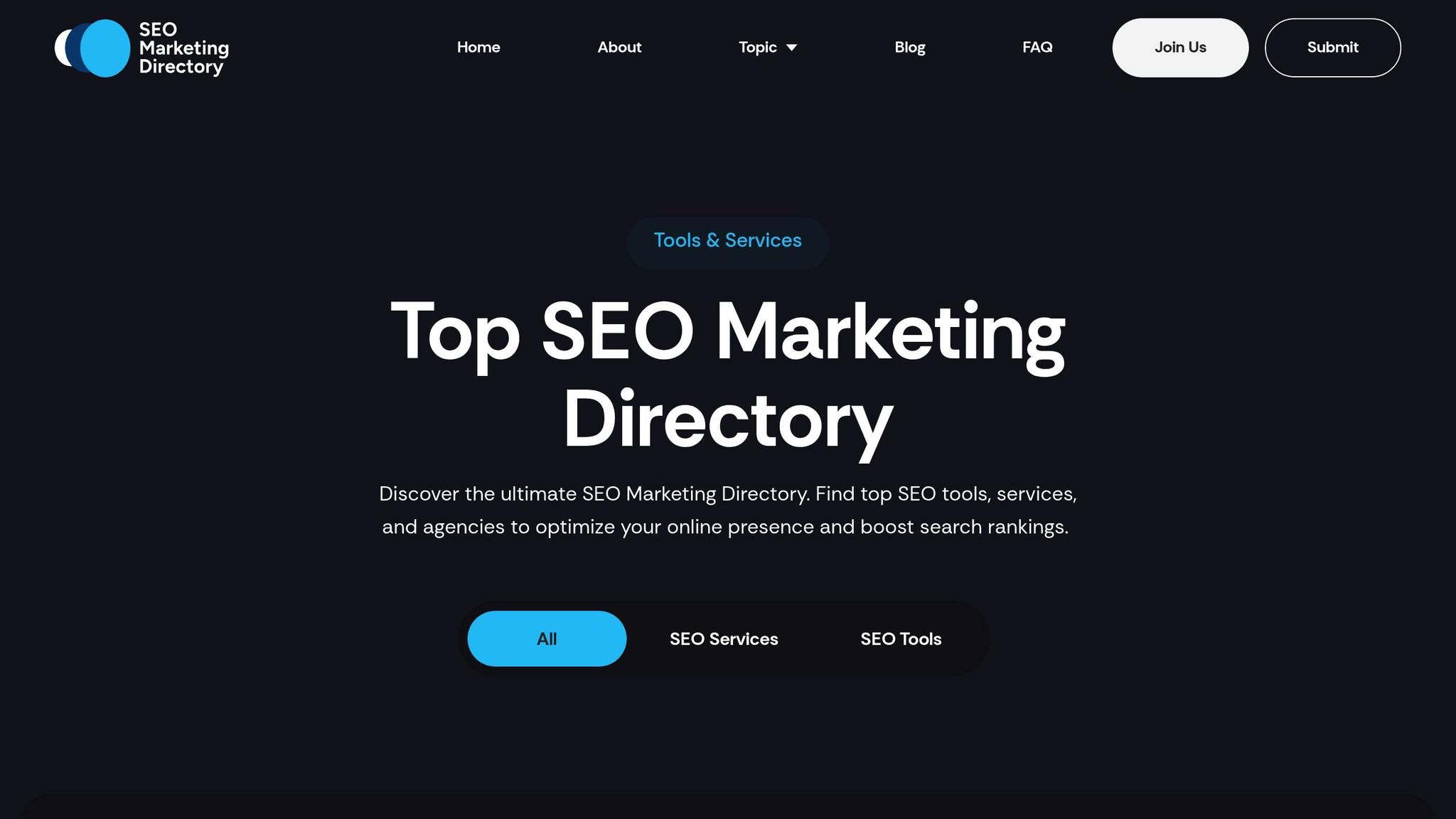App localization is one of the most effective ways to improve your app's performance in global markets. By tailoring your app's language, visuals, and features to meet the preferences of specific regions, you can significantly improve its visibility, downloads, and user engagement.
Here’s why localization matters for App Store Optimization (ASO):
- Better Search Rankings: Localized keywords align with regional search habits, making your app easier to find.
- Higher Conversion Rates: Apps that reflect local languages and preferences feel more relevant, increasing downloads.
- Improved User Experience: Localized content ensures smoother navigation and builds trust among users.
- More Positive Reviews: Satisfied users leave better feedback, which boosts rankings further.
Localization isn’t just about translating text - it involves adapting visuals, metadata, and even features to match the expectations of each market. Apps that prioritize localization outperform competitors in search results, user retention, and overall ASO metrics.
If you’re looking to grow your app globally, start by focusing on a few key markets, research local search behaviors, and continuously refine your localization efforts.
How to Boost Your App Growth With Localization
Key Components of App Localization for ASO
To succeed in global markets, it's important to focus on the elements that enhance your app's visibility and user engagement in each region. Here are the key aspects to consider for an effective localization strategy.
Localizing App Store Metadata
Adapting your app store metadata is a cornerstone of global ASO. This includes refining app titles, subtitles, keyword fields, and descriptions to align with local languages and search habits. Avoid simple word-for-word translations; instead, focus on tailoring these elements to reflect regional search behavior and preferences. This not only boosts discoverability but also ensures your app's messaging feels relevant and appealing to users in each market.
Adapting Visual Assets
Visual elements like screenshots, icons, and videos play a significant role in user engagement. Localization here means more than just swapping out text - it involves aligning visuals with local tastes, cultural norms, and even technical requirements. For example, screenshots should highlight features that resonate with the target audience and follow regional design conventions, such as reading direction or layout preferences. Pay attention to how colors, symbols, and imagery are perceived in different cultures. Additionally, localized preview videos with region-appropriate voice-overs and music can create a more immersive experience, encouraging higher conversion rates.
Getting Accurate Translations
High-quality translations are essential for maintaining your app's reputation and ensuring a seamless user experience. Work with professional translators and native speakers who understand the cultural and linguistic nuances of your target market. This approach is crucial for adapting user interfaces, app store content, and in-app messaging in a way that feels natural and trustworthy. Automated translations often miss subtle context, leading to confusion or errors. A consistent review process and standardized terminology further ensure that your app delivers a cohesive and polished localized experience.
How Localization Improves ASO Metrics
Adapting your app to fit regional languages and preferences can significantly boost its performance in App Store Optimization (ASO). Localization helps improve visibility, user engagement, and overall market success by creating a more tailored experience for users.
Better Keyword Rankings and Visibility
Using localized keywords makes your app easier to find because it matches how people search in their native languages. By researching and incorporating local search terms, you align your strategy with specific search habits in different regions, which can lead to better rankings.
Additionally, ensuring that your app's metadata - like titles, descriptions, and tags - is written in the local language can improve not only your search rankings but also your chances of being featured in app stores.
Higher Conversion and Retention Rates
When your app ranks higher in searches, it naturally attracts more users. But localization does more than just bring people to your app - it builds trust. Seeing an app store listing in their own language, with culturally relevant visuals and messaging, makes users more likely to download and engage with the app.
Localization also enhances the experience beyond the app store. Including local currency symbols and region-specific screenshots can make the app feel more familiar and reduce barriers to downloading. This personalized approach often leads to better-qualified installs, where users are genuinely interested and likely to stay.
Once users are in the app, localized content - like in-app messages, notifications, and interface elements - can make it easier for them to navigate. A smooth onboarding process tailored to local expectations can lower early drop-off rates and encourage long-term use. Over time, this can also increase in-app purchases or subscription renewals.
More Positive Ratings and Reviews
When users feel understood and supported by an app, they’re more likely to leave positive feedback. Apps that offer a seamless localized experience often receive higher ratings and reviews. Users appreciate when an app feels like it was designed with their specific needs in mind, and this appreciation is reflected in their feedback.
Localized reviews also help in two ways: they provide valuable social proof to other potential users and expand your keyword reach. Reviews that mention familiar cultural elements or local payment options can resonate deeply with new users, making them more likely to trust and download your app.
Together, these improvements in visibility, user engagement, and feedback contribute to higher ASO rankings, giving your app a competitive edge in the market.
Tools and Resources for App Localization and ASO
When it comes to improving your app's performance through localization and App Store Optimization (ASO), having the right tools can make all the difference. These tools not only simplify the process but also help you achieve better visibility and engagement across different markets. One standout resource to consider is detailed below.
Leveraging the Top SEO Marketing Directory

The Top SEO Marketing Directory is a curated collection of SEO tools and services designed to support both app localization and ASO efforts. It covers everything from keyword research to technical and local SEO, all aimed at increasing your app's visibility in competitive app stores.
Agencies listed in this directory bring expertise in international markets, offering services like market research, competitive analysis, and ongoing optimization. This makes it especially valuable for apps targeting users in multiple regions.
What’s more, the directory provides technical SEO resources that ensure your web presence aligns seamlessly with your app store listings. This alignment helps strengthen your brand identity and build trust among users. For those looking to dive deeper, premium access is available for $49/month, offering affordable solutions to tackle localization challenges effectively.
If your focus is on location-based targeting, the directory's local SEO section offers insights into regional search trends. These insights can be a game-changer, helping you refine your app store keyword strategy to better connect with local audiences.
sbb-itb-5be333f
Best Practices for App Localization
Incorporating localization into your App Store Optimization (ASO) strategy isn't just a one-off task - it’s an ongoing process that can boost keyword rankings, improve conversion rates, and enhance user satisfaction. These elements are critical for achieving better ASO outcomes.
Conducting Market Research
Start by digging deep into your target markets. Understanding local search habits and user behavior goes beyond just collecting demographic data. It’s about figuring out how users in different regions discover and interact with apps.
For instance, keyword preferences can vary widely. In Germany, users might search for "Fitness-App", while in France, they may look for "application sport." These differences directly shape your keyword strategy and influence your app's visibility in localized app stores.
Cultural nuances also matter. Visuals, colors, and messaging that resonate with users in the United States might not have the same impact in Japan or Brazil. For example, while bold and direct marketing appeals to many American users, audiences in some Asian markets often prefer more understated, relationship-focused communication styles.
Don’t forget to analyze the competition in each region. The apps dominating your category in one country might not even exist in another. Studying successful local competitors can reveal user expectations and give you a clearer picture of the market landscape.
Seasonal trends also vary greatly. A fitness app might see a spike in downloads in January in the U.S. due to New Year’s resolutions, but in Australia, the peak might hit in December during summer. Use these insights to fine-tune your ASO efforts.
Adding Localization to Your ASO Workflow
Seamlessly integrating localization into your ASO workflow requires careful planning. Think of it as a continuous part of your optimization process, not just a one-time effort.
- Create a localization timeline: Coordinate localized updates with your ASO updates. Releasing localized versions 2–4 weeks after updating your primary listing ensures consistency while allowing time for proper adaptation.
- Develop local keyword lists: Avoid simply translating existing keywords. Instead, research terms that local users are actually searching for. Tools that provide local search volume data can help you uncover high-impact keywords that don’t always have direct English equivalents.
- Adapt visual assets: Screenshots, promotional graphics, and other visuals should reflect local languages and cultural preferences. This ensures your app feels relevant and relatable in each market.
- Track region-specific performance: Use analytics to monitor metrics like downloads, keyword rankings, and user engagement in each market. This data helps you pinpoint which regions are excelling and which need more attention.
- Establish feedback loops: Reviews and user feedback in each market can offer insights into local preferences and highlight areas for improvement.
Continuous Optimization
Localization isn’t a “set it and forget it” strategy. To stay ahead, you need to consistently refine your approach based on performance data and evolving market conditions.
- Monitor metrics regularly: Keep an eye on keyword rankings, conversion rates, and engagement across all localized markets. If performance drops, it could signal shifting user preferences or stronger competition.
- Update content frequently: App store algorithms favor listings that are actively maintained. Conduct quarterly reviews of your localized metadata and visuals to ensure they remain fresh and relevant.
- Stay tuned to local trends: Holidays, cultural events, and trending topics can create opportunities to make your app more appealing to local audiences.
- Test localized variations: Just like in your primary market, A/B testing is essential. Experiment with different app names, descriptions, or visuals in localized markets to see what resonates best. Remember, what works in Spain might not work in Mexico, even though both are Spanish-speaking markets.
- Leverage user feedback: Reviews, support tickets, and direct user research often provide valuable insights that your team might not catch otherwise.
Conclusion
App localization can significantly enhance your app's ASO (App Store Optimization) performance. By tailoring your app to resonate with different markets, you create stronger local connections that naturally lead to better rankings and downloads.
Key Takeaways
Localized apps consistently outperform their non-localized counterparts in ASO metrics. When your app aligns with the preferences and expectations of local audiences, it maintains its competitive edge throughout its lifecycle.
- Localized keywords drive better search rankings and organic traffic.
- Culturally relevant visuals improve conversion rates.
- Native-like user experiences boost engagement and encourage positive reviews.
This cycle of improved engagement signals app store algorithms that your app delivers value, which further improves its rankings. Plus, glowing reviews from satisfied local users enhance credibility, attracting even more downloads.
Next Steps for Success
To build on these ASO improvements, focus on targeted actions that create lasting impact. Start by identifying your most promising markets using your user data and competitor insights. Instead of attempting to localize for every region at once, prioritize 2-3 key markets to optimize your efforts.
Invest in thorough research and ongoing optimization. Truly effective localization goes beyond simple translation - it requires an understanding of local language nuances, cultural preferences, and user behavior. This ensures your app feels native to each market.
If you're looking for professional support, consider tools like the Top SEO Marketing Directory. It lists experts in ASO and localization who can help you implement strategies tailored to your app's needs and deliver measurable results.
Track your progress with regional analytics. Keep an eye on metrics like keyword rankings, conversion rates, and engagement levels in each localized market. This data will help you refine your approach and identify what resonates best with your users.
Finally, remember that localization is not a one-and-done effort. Markets evolve, user preferences shift, and competition grows fiercer. By treating localization as an ongoing process, you can ensure your app stays relevant and competitive across all your target markets.
The real question isn't whether localization will improve your ASO - it’s how soon you’ll start leveraging it to gain a competitive edge.
FAQs
How does app localization improve app store search rankings?
How App Localization Impacts Search Rankings
App localization can play a huge role in improving your app's search rankings in app stores. By tailoring elements like titles, descriptions, and visuals to specific regions, your app becomes more relevant to local keywords. This makes it easier for users in those regions to find your app when searching.
But that's not all - localized apps often experience better user engagement and retention. Why? Because users are more likely to connect with an app that feels tailored to their language and culture. These positive signals tell app store algorithms that your app delivers value, which can further boost its rankings. In short, localization doesn’t just help your app get discovered; it can lead to more organic downloads and long-term growth.
What are the key factors to consider when localizing an app for a new market?
When preparing an app for a new market, language adaptation should be a top priority. This means ensuring translations are not only accurate but also reflect local nuances and cultural context. A poorly translated phrase can confuse users or even offend, so getting this right is crucial.
But localization isn’t just about words. Pay attention to visual elements like colors, icons, and symbols. What works in one culture might carry a completely different meaning elsewhere. For example, certain colors may symbolize luck in one region but have negative connotations in another. Small details like these can make or break a user’s connection with your app.
It’s also vital to adjust regional settings to match local standards. This includes things like currency formats (e.g., $1,234.56), date and time formats (MM/DD/YYYY in the U.S.), measurement units (inches and miles instead of centimeters and kilometers), and even text direction for languages like Arabic or Hebrew. These adjustments help users feel at home with your app.
Finally, market research plays a key role. By understanding local preferences and behaviors, you can fine-tune your app to better align with user expectations. This can lead to higher engagement and satisfaction, ultimately making your app more appealing and visible in app stores.
How do I evaluate the impact of app localization on ASO performance?
To understand how app localization influences ASO performance, keep an eye on critical metrics like downloads by region, user acquisition rates, and engagement levels in the markets you've localized for. These numbers can reveal how well your app is connecting with users in specific areas.
You should also monitor shifts in app store rankings, conversion rates, and user reviews. These indicators can shed light on whether your app aligns with the preferences and expectations of local audiences.
For a broader perspective, examine long-term trends in retention rates and user satisfaction. This will help you gauge if your localization strategy is driving steady growth over time. By analyzing these metrics, you'll be better equipped to determine if your app is effectively engaging users across different regions and improving its visibility and performance in app stores.


